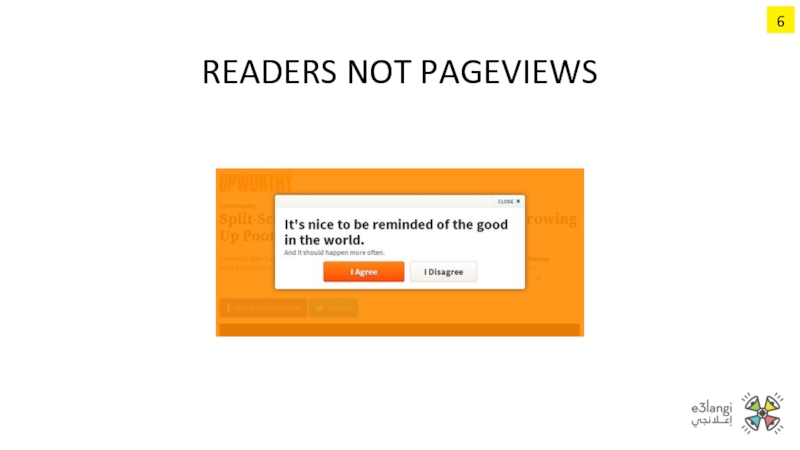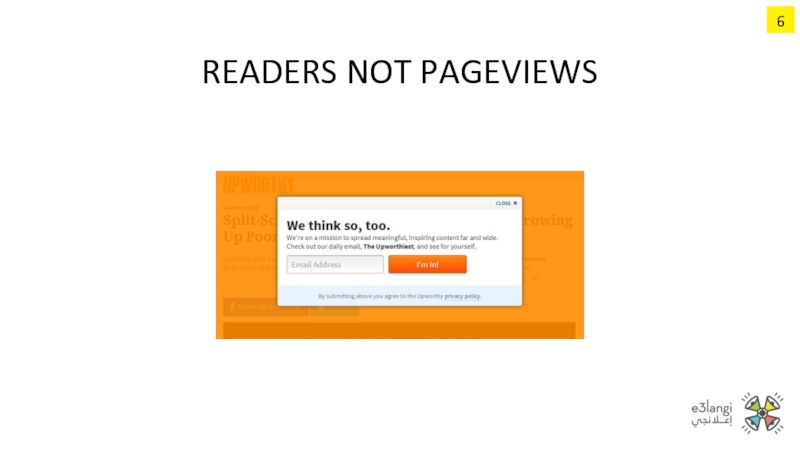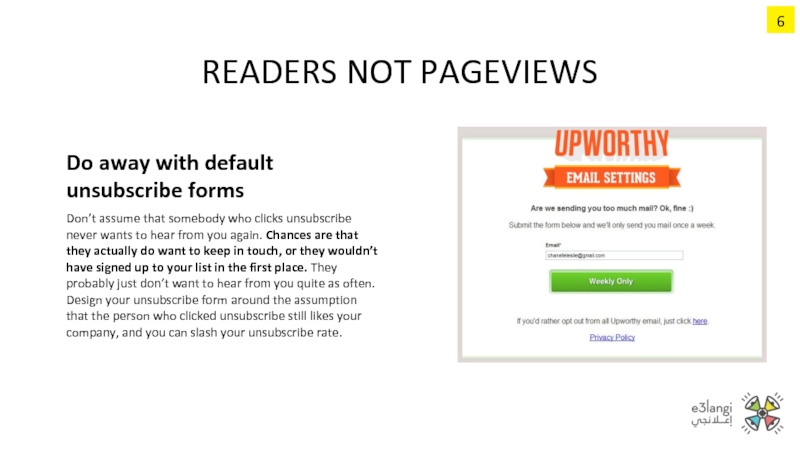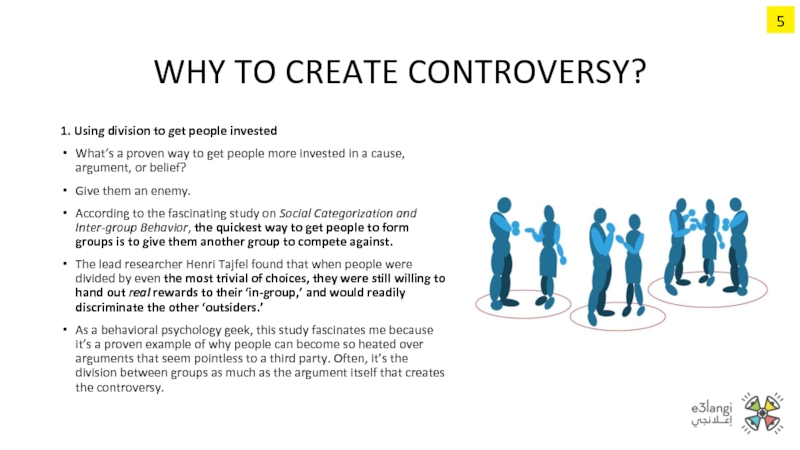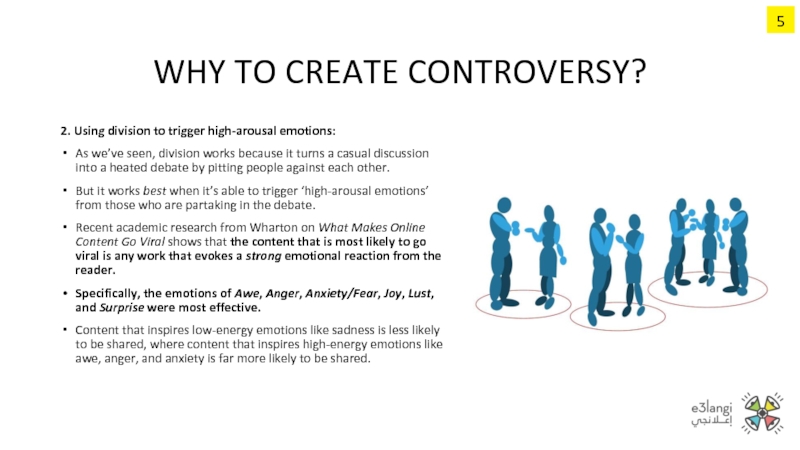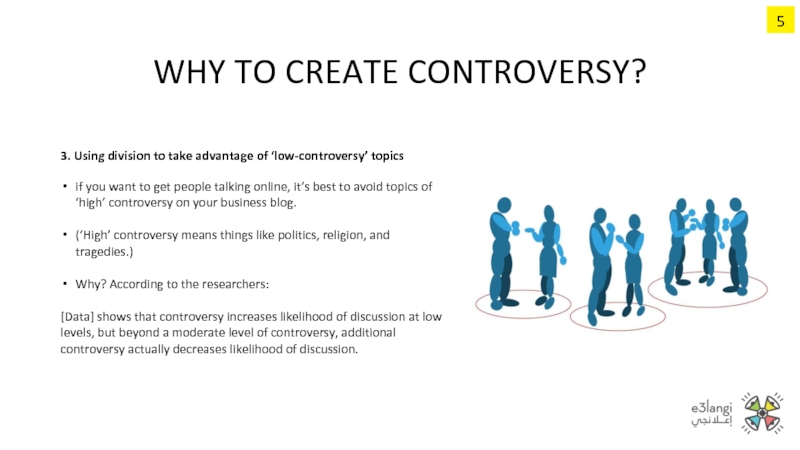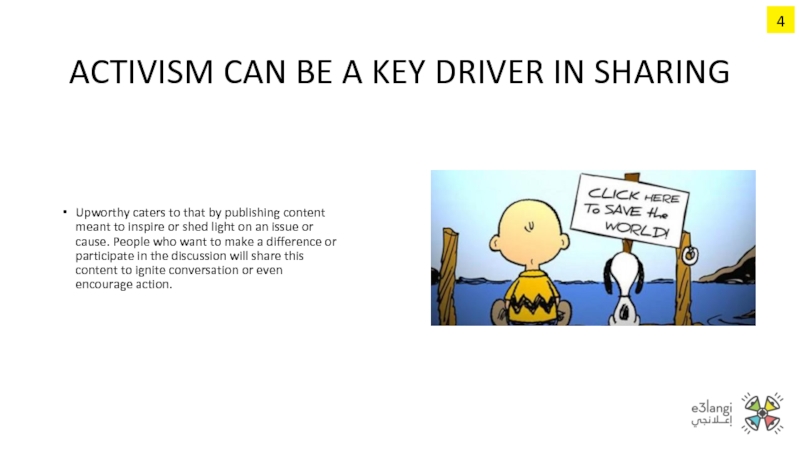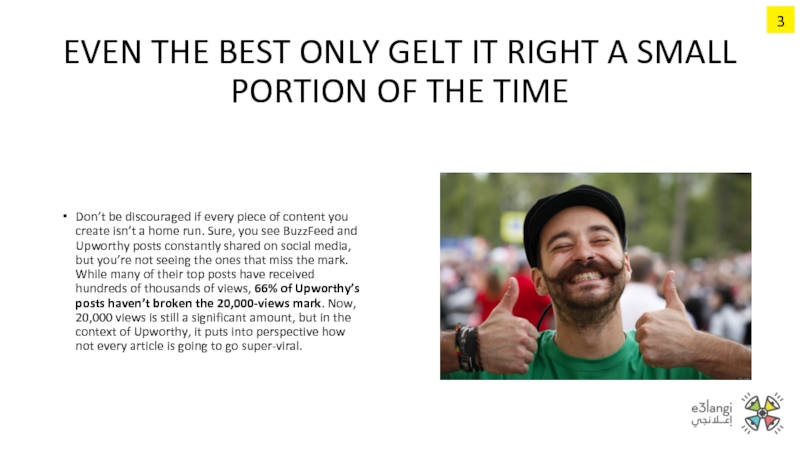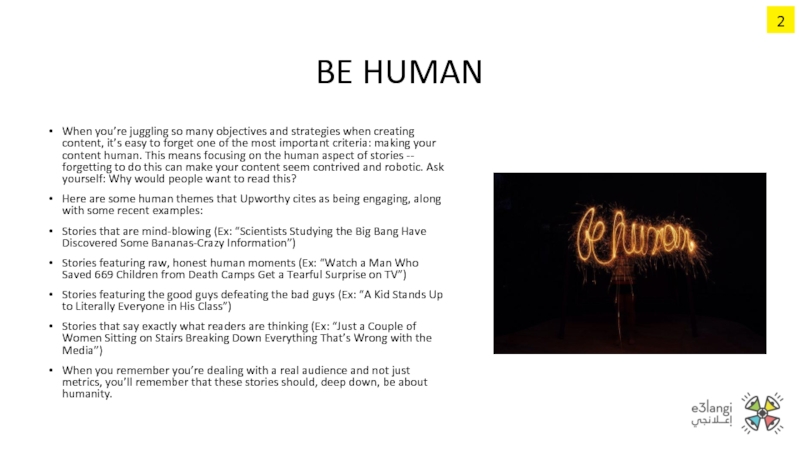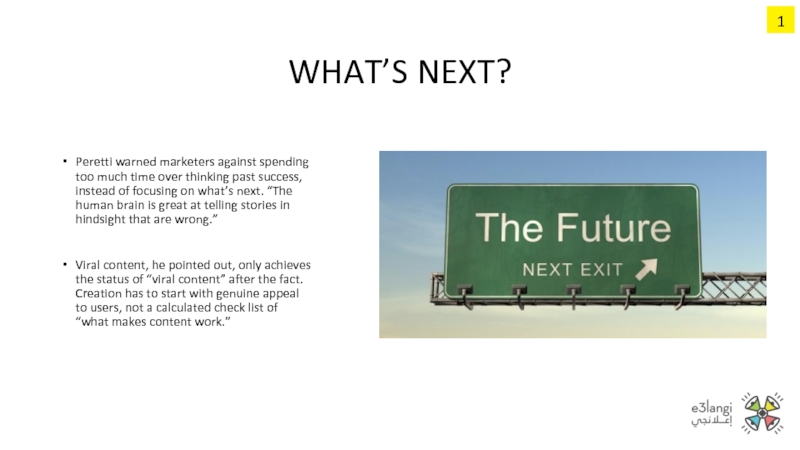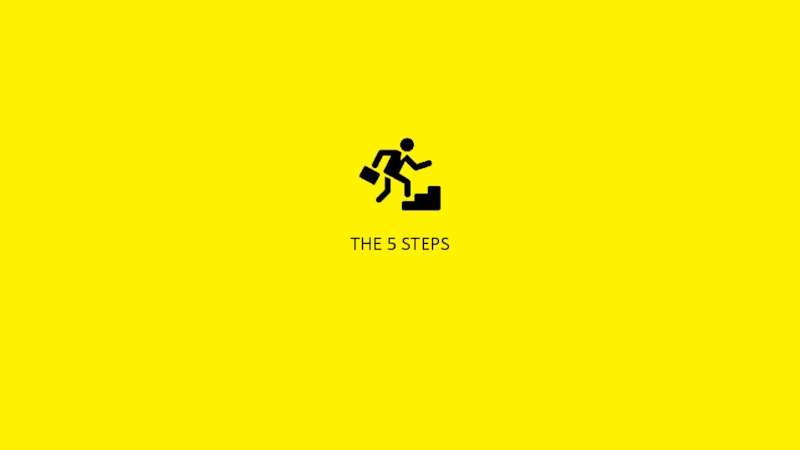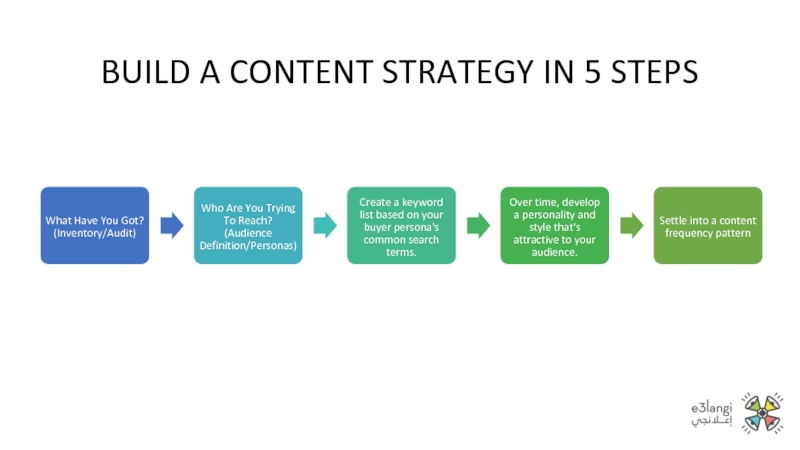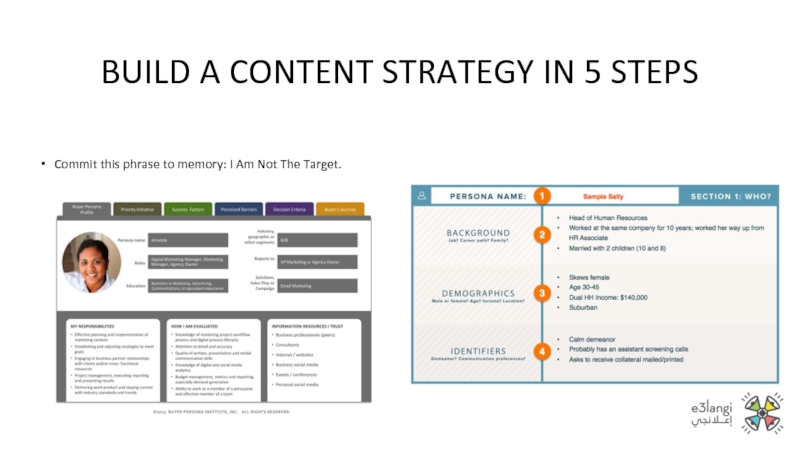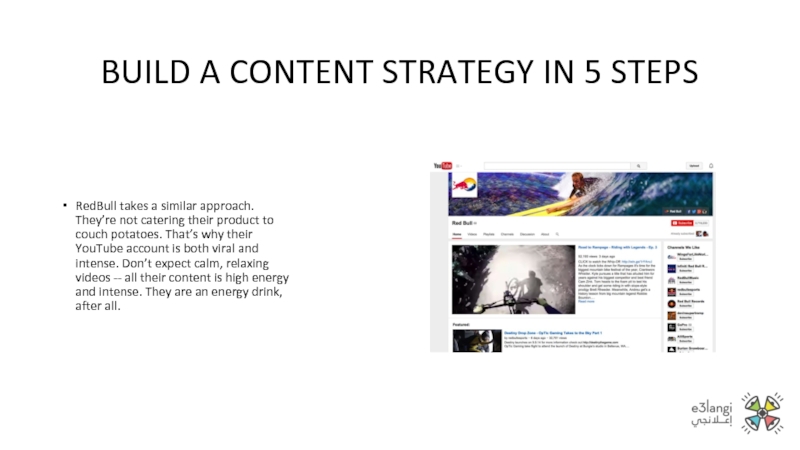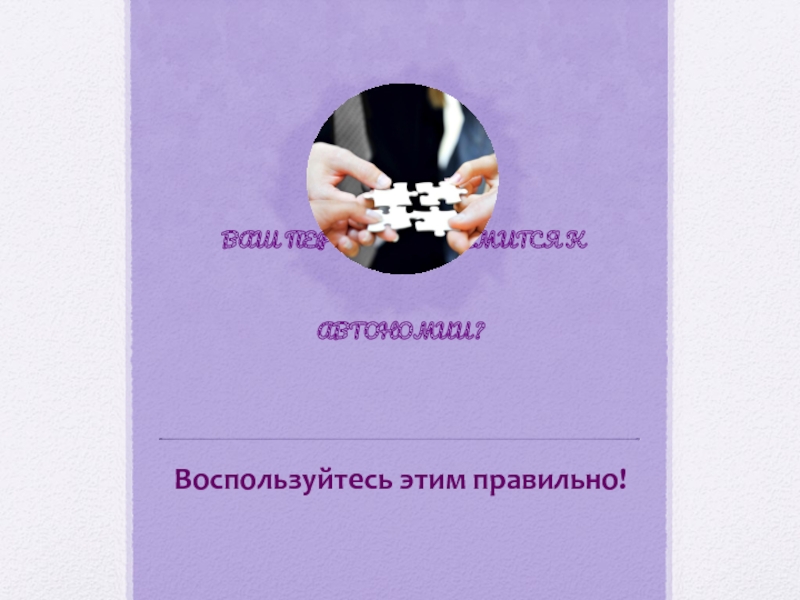- Главная
- Разное
- Дизайн
- Бизнес и предпринимательство
- Аналитика
- Образование
- Развлечения
- Красота и здоровье
- Финансы
- Государство
- Путешествия
- Спорт
- Недвижимость
- Армия
- Графика
- Культурология
- Еда и кулинария
- Лингвистика
- Английский язык
- Астрономия
- Алгебра
- Биология
- География
- Детские презентации
- Информатика
- История
- Литература
- Маркетинг
- Математика
- Медицина
- Менеджмент
- Музыка
- МХК
- Немецкий язык
- ОБЖ
- Обществознание
- Окружающий мир
- Педагогика
- Русский язык
- Технология
- Физика
- Философия
- Химия
- Шаблоны, картинки для презентаций
- Экология
- Экономика
- Юриспруденция
BYMUHAMMAD OMARBRAND MANAGER ASST. @ SARMADY – A VODAFONE COMPANYCO-FOUNDER/ BLOGGER @ E3LANGI.COM презентация
Содержание
- 1. BYMUHAMMAD OMARBRAND MANAGER ASST. @ SARMADY – A VODAFONE COMPANYCO-FOUNDER/ BLOGGER @ E3LANGI.COM
- 2. REFERENCES POYNTER.ORG KISSMETRICS.COM WAN-IFRA.ORG HUBSPOT.COM KWASISTUDIOS.COM HUFFINGTONPOST.COM SEARCHENGINEWATCH.COM BRAFTON.COM CONTENTMARKETINGINSTITUTE.COM PORTENT.COM SPARRINGMIND.COM
- 3. WHY PEOPLE LIKE TO READ?
- 4. A STUDY BY PEWRESEARCH CENTER 26% of
- 5. BASIC BUILDING BLOCKS
- 6. THE TRAFFIC BASIC DEFINITIONS: 5
- 7. THE TRAFFIC 5
- 8. THE TRAFFIC Facebook is a big traffic
- 9. Peretti called early keyword optimization at Buzzfeed a “happy
- 10. Peretti is an advocate for more
- 11. Important Audiences Are the “Bored at Work”
- 12. TARGET SPECIFIC AUDIENCE It might seem logical
- 13. USE THE SAME TERMINOLOGY AS YOUR AUDIENCE
- 14. Your Mom rule, which is that no
- 15. When you boil it down, BuzzFeed is
- 16. CONTENT CATEGORIES Buzzfeed has identified several specific
- 17. THE CONTENT Only publish when you can
- 18. Often times, content can either be repurposed,
- 19. Sometimes it’s not all about producing super
- 20. THE CONTENT THE 6 BUTTONS YOU NEED TO PUSH 3
- 21. [1] Taboo Content Definition: Labeled by a
- 22. [2] Unusual Content Definition: Not usual, common,
- 23. [3] Outrageous Content Definition: Passing reasonable bounds,
- 24. [4] Hilarious Content Definition: Arousing great merriment;
- 25. [5] Remarkable Content Definition: Notable, extraordinary, worthy
- 26. [6] Secret Content Definition: Kept from the
- 28. THE CONTENT Content that evokes an emotional
- 29. Stack, Stack, Stack one compelling paragraph,
- 30. Headline examples from the study: - Rare
- 31. Headline examples from the study: - What
- 32. Headline examples from the study: - Passion
- 33. Headline examples from the study: - For
- 34. Headline examples from the study: - Wide-Eyed
- 35. Headline example from the study: - Love,
- 36. “15 Things You Should Give Up To
- 37. “15 Things You Should Give Up To
- 38. On average, 8 out of 10 people
- 39. THE HEADLINE Upworth’ editors must assemble at least 25 headlines for
- 40. the team goes for shock and awe
- 41. THE HEADLINE 2 WHICH OF THOSE 2 ARTICLES YOU WILL CLICK ON?
- 43. THE 9 WISDOMES
- 44. IT’S ALL ABOUT SHARING On success metrics
- 45. IT’S ALL ABOUT SHARING 94% Altruism. We
- 46. 9 Altruists tend to be female, want to
- 47. IT’S ALL ABOUT SHARING THE BEST TIMES
- 48. Adding the floating buttons resulted in a 398%
- 49. ALLOW THE VIEWER TO ENGAGE BEFORE OFFERING
- 50. THE CREATIVE CONVERSION ! UpWorthy literally tested
- 51. TESTING USERS BEHAVIORS “Ghetto testing” via social
- 52. READERS NOT PAGEVIEWS We want [readers] to
- 53. READERS NOT PAGEVIEWS 6
- 54. READERS NOT PAGEVIEWS 6
- 55. READERS NOT PAGEVIEWS Don’t assume that somebody
- 56. WHY TO CREATE CONTROVERSY? 1. Using division
- 57. WHY TO CREATE CONTROVERSY? 2. Using division
- 58. WHY TO CREATE CONTROVERSY? 3. Using division
- 59. ACTIVISM CAN BE A KEY DRIVER IN
- 60. EVEN THE BEST ONLY GELT IT RIGHT
- 61. BE HUMAN When you’re juggling so many
- 62. WHAT’S NEXT? Peretti warned marketers against spending
- 63. THE 5 STEPS
- 64. BUILD A CONTENT STRATEGY IN 5 STEPS
- 65. BUILD A CONTENT STRATEGY IN 5 STEPS
- 66. BUILD A CONTENT STRATEGY IN 5 STEPS
Слайд 1BY MUHAMMAD OMAR BRAND MANAGER ASST. @ SARMADY – A VODAFONE COMPANY CO-FOUNDER/ BLOGGER
Слайд 2REFERENCES
POYNTER.ORG
KISSMETRICS.COM
WAN-IFRA.ORG
HUBSPOT.COM
KWASISTUDIOS.COM
HUFFINGTONPOST.COM
SEARCHENGINEWATCH.COM
BRAFTON.COM
CONTENTMARKETINGINSTITUTE.COM
PORTENT.COM
SPARRINGMIND.COM
Слайд 4A STUDY BY PEWRESEARCH CENTER
26% of those who had read a
15% cited the pleasures of escaping reality, becoming immersed in another world, and the enjoyment they got from using their imaginations.
12% said they liked the entertainment value of reading, the drama of good stories, the suspense of watching a good plot unfold.
12% said they enjoyed relaxing while reading and having quiet time.
6% liked the variety of topics they could access via reading and how they could find books that particularly interested them.
4% said they enjoy finding spiritual enrichment through reading and expanding their worldview.
3% said they like being mentally challenged by books.
Слайд 8THE TRAFFIC
Facebook is a big traffic driver for Buzzfeed. Peretti also
It’s perhaps especially rewarding for brands that inherently target niche audiences. Brafton’s reported success for small publishers from similar Facebook updates in the past.
FACEBOOK IS YOUR BEST SOCIAL NETWORK
5
Слайд 9Peretti called early keyword optimization at Buzzfeed a “happy accident.” It happened organically
Brafton takes a similar approach; this content for SEO eBook is not what many marketers might expect, but instead offers actionable strategies on how to answer user queries throughout the marketing funnel….
THE TRAFFIC
BEHAVIORS NOT SEARCH ENGINES
5
Слайд 10
Peretti is an advocate for more social data influencing search presence.
“Back when Google used Twitter, BuzzFeed definitely saw SEO wins. Now that it crawls Pinterest, our lifestyle section has gotten a big search boost.”
THE TRAFFIC
SOCIAL & SEARCH
5
Слайд 11Important Audiences Are the “Bored at Work” and the “Bored in
the target audience they see as most valuable are the “bored at work,” those who have jobs that use computers but are able to spend a substantial amount of time browsing the Internet without supervision. This general audience is typically looking for content that will:
1- Alleviate boredom
2- Connect with their current frustrations
For the “Bored at Work” group, content that is NSFW (not safe for work) is usually shared at a significantly lower rate. Additionally, NSFW content is generally not something people are eager to share with broad groups of their friends or family.
BuzzFeed also targets the “Bored in Line,” or those who consume content on their mobile phones while waiting. They found that this audience was the principal driver of social sharing. Making sure their content was mobile-enabled and quick and easy to consume on phones led to significant gains over the last several years. Now, more than 1/3 of all BuzzFeed traffic is from mobile.
THE AUDIENCE
4
Слайд 12TARGET SPECIFIC AUDIENCE
It might seem logical that going for the largest
This type of post helps attract people who believe they have a certain characteristic, experience, or opinion -- in this case, anyone who self-identifies as sarcastic. (Which, turns out, is a lot of people.) This sort of post generates interest from lots of like-minded people, who then share it with more like-minded people, which leads to more and more pageviews.
THE AUDIENCE
4
Слайд 13USE THE SAME TERMINOLOGY AS YOUR AUDIENCE
BuzzFeed has a style guide like every
Another takeaway from the style guide is the fact that BuzzFeed chooses to determine the appropriate style for words and terms people may find facetious, like “man-child,” “J.Law,” and “1D” (an abbreviation for One Direction), but giving these “silly” phrases a space in their official style book indicates how seriously BuzzFeed takes pop culture and the subjects its readers care about. It’s acknowledging that while some of the topics may be light-hearted, that doesn’t make them unworthy of attention. They’re not afraid to speak the language of their readers, which is vital for a sustaining connection.
THE AUDIENCE
4
Слайд 14Your Mom rule, which is that no article should genuinely upset
Of course, you need to keep your ideal audience in mind, but for many brands, this seemingly silly standard is a great way to keep yourself from getting too controversial in your attempt to get your content noticed.
THE AUDIENCE
THE MOM RULE
4
Слайд 15When you boil it down, BuzzFeed is probably 90 percent pictures,
CONTENT COMPONENTS
THE CONTENT
3
Слайд 16CONTENT CATEGORIES
Buzzfeed has identified several specific content categories that the majority
LOL: Humorous content
Win: Content that is particularly useful, ingenious, or admirable
OMG: Content that is shocking
Cute: Self explanatory, generally animal-based content
Trashy: Schadenfreude-esque content. People like to feel better about themselves by mocking or ridiculing the failures of others, especially the famous
Fail: Content that points out the failings of both individuals and society -- a way for everyone to collectively vent through shared frustrations
WTF: Strange, bizarre, and other curiosity-triggering content
Consider these types of content when brainstorming your content. Always ask yourself, how will this content make the reader react.
THE CONTENT
3
Слайд 17THE CONTENT
Only publish when you can be awesome, as a community is
In another unusual strategy for a site focused on viral content, UpWorthy staff say that breaking a story does not matter very much to them:
“We’ve seen no advantage to jumping on something first. Actually, a lot of our biggest hits have been things that were already circulating around. Topicality matters but newness doesn’t.”
THE FIRST IS NOT ALWAYS BEAUTIFUL
3
Слайд 18Often times, content can either be repurposed, updated, or presented from
ORIGINALITY IS OVERRATED
THE CONTENT
Maybe one of the most widely used examples of this is the, “What kind of _______ are you?” quiz. Just doing a BuzzFeed search on the words “What kind of” will provide a snapshot of how niche some of these surveys are getting (“What Kind of Pizza Are You Based On Your Star Sign”), but it’s because it’s been identified that they work. When you know an audience responds to a certain setup, see what other ways you can use that setup with different content.
3
Слайд 19Sometimes it’s not all about producing super new, never-before-seen content, as
As Upworthy co-founder Peter Koechley said, there’s plenty of content on the Internet, but because there’s so much, it’s hard to identify the best media. That’s the task Upworthy has taken upon itself. Co-founder Eli Pariser estimates that Upworthy only publishes about 60 pieces of content a week in order to make sure each story can genuinely garner interest.
And there’s a hidden benefit -- because the content isn’t necessarily timely, that means it’s very unlikely another publisher will be discussing the same stories. This is much, much harder to accomplish with recent news and trends.
CURATION IS UNDERRATED
THE CONTENT
3
Слайд 21[1] Taboo Content
Definition: Labeled by a society as improper, unacceptable, prohibited, or
If you’re struggling to find something to make for dinner (mundane), why not try WHAT THE FUCK SHOULD I MAKE FOR DINNER? (profane).
Sex, lies, and bathroom humor, all words used to define this type of content, and a surefire way to get people talking.
THE CONTENT
THE 6 BUTTONS YOU NEED TO PUSH
3
Слайд 22[2] Unusual Content
Definition: Not usual, common, or ordinary; uncommon in amount or
Unusual doesn’t have to be completely new, it just has to be uncommon enough to leave an impression.
Unusual content is the “Did you hear about…” kind of content, something about the presentation or the information makes people do a double-take, and therefore gets them to talk.
THE CONTENT
THE 6 BUTTONS YOU NEED TO PUSH
3
Слайд 23[3] Outrageous Content
Definition: Passing reasonable bounds, shocking, unconventional, extravagant.
This is the kind
The kind of content that makes you actually speak to your screen, even if you’re all alone in your room: “What the…?”
It doesn’t always have to invoke anger, but it often does.
Sometimes it just invokes excitement, as in: “I can’t believe they are doing that!”
Take Fit 2 Fat 2 Fit, the online tale of a personal fitness model who purposefully let himself get fat, so that he could show how to get fit again.
THE CONTENT
THE 6 BUTTONS YOU NEED TO PUSH
3
Слайд 24[4] Hilarious Content
Definition: Arousing great merriment; funny.
You have to watch with humor
THE CONTENT
THE 6 BUTTONS YOU NEED TO PUSH
3
Слайд 25[5] Remarkable Content
Definition: Notable, extraordinary, worthy of notice or attention.
Remarkable is generally
THE CONTENT
THE 6 BUTTONS YOU NEED TO PUSH
3
Слайд 26[6] Secret Content
Definition: Kept from the knowledge of any but the initiated
I was able to reveal a secret to you because it was new to you, my “initiated and privileged” audience.
THE CONTENT
THE 6 BUTTONS YOU NEED TO PUSH
3
Слайд 28THE CONTENT
Content that evokes an emotional response is MUCH more likely
Positive content performs better than negative content
Articles viewed as “practically useful” often performed very well
Even if your content is dry by necessity, you may be able to include a related image that generates emotion.
The most successful of buzzfeed posts, like “The 45 Most Powerful images of 2011” It’s important to analyze data, but you can’t underestimate the importance of human emotion.
EMOTIONS SELL
3
Слайд 29Stack, Stack, Stack
one compelling paragraph, video, or image can make an
THE CONTENT
EMOTIONS SELL
3
Слайд 30Headline examples from the study:
- Rare Treatment Is Reported to Cure
- The Promise and Power of RNA
These headlines speak volumes about the types of content that evoke this response.
Exhaustive content, an article in the form of a real-life story (experienced or just covered by you), or a solution to a nagging problem that readers thought they’d never find a solution for fits the bill here.
Content that is just “too good to be true”, you’ll see how effective it is if you pick up any newspaper
THE CONTENT
EMOTION OF AWE
3
Слайд 31Headline examples from the study:
- What Red Ink? Wallstreet Paid Hefty
- Loan Titans Paid McCain Adviser Nearly $2 Million
You’ll notice how the headlines above seek to invoke a sense of disbelief in the reader before they’ve even clicked through.
That’s the power of invoking anger.
When you relay a message that makes people mad, they will want justice, they will also want their voice to be heard.
This kind of content goes viral because people will go out of their way to leave a remark (in the forms of shares & blog posts as well).
Just don’t go around pissing people off all the time!
THE CONTENT
EMOTION OF ANGER
3
Слайд 32Headline examples from the study:
- Passion for Food Adjusts to a
- Pecking, but No Order, on Streets of East Harlem (story about a bunch of chickens running around Harlem!)
Surprise can be one of the most powerful forms of content to create, if only because you can use it more often than the others.
“Awe” and “anger” both evoke strong emotional responses, but would you really want to go to a site that constantly has you in awe or in anger?. I don’t think so.
On the flip side, would you like a site that surprises you with every post?. I think you get my point!
THE CONTENT
EMOTION OF SURPRISE
3
Слайд 33Headline examples from the study:
- For Stocks, Worse Single-Day Drop in
- Home Prices Seem Far from Bottom
People hate losing things they already have, even more than they hate missing out on potentially winning things.
That’s the science behind the psychological process of loss aversion, which is described as:
people’s tendency to strongly prefer avoiding losses to acquiring gains. Some studies suggest that losses are twice as powerful, psychologically, as gains.
You don’t have to tell people the world is falling down, you just have to have your headline convince potential readers that they could be losing out BIG, but you have the way to fix things.
THE CONTENT
EMOTION OF ANXIETY/ FEAR
3
Слайд 34Headline examples from the study:
- Wide-Eyed New Arrivals Falling in Love
- Tony Award for Philanthropy
Surprising enough, people still like to hear about good things happening to people other than themselves!
Joy is often best used in personal story or tale that aims to connect with readers.
Funny, inspiring, uplifting, just put a smile on their face at the end of it.
THE CONTENT
EMOTION OF JOY
3
Слайд 35Headline example from the study:
- Love, Sex, and the Changing Landscape
The thing is people can lust over more than just sex.
Money, feeling attractive, success, the name of the game here is tantalizing people with results.
Case studies often do this well, as they present “lustful” results (“Damn, I wish I had those results!”) while maintaining a ‘non-braggart’ demeanor.
Otherwise, sell potential, and you’ll have readers lusting.
THE CONTENT
EMOTION OF LUST
3
Слайд 36“15 Things You Should Give Up To Be Happy”
WHICH BUTTONS THEY
THE CONTENT
CASE
3
Слайд 37“15 Things You Should Give Up To Be Happy”
Buttons:
- Unusual
- Remarkable
-
Emotions:
- Joy
- Anxiety
- Surprise (maybe even Awe)
THE CONTENT
CASE
3
Слайд 38On average, 8 out of 10 people will read headline copy,
CLICKABLE HEADLINES:
Don’t give the full story away in the headline
Don’t give everything away in the excerpt or image
Don’t be shrill; allow people to form their own opinions
Don’t bum people out: emotional content should be focused on excitement, surprise, and even anger, but never sadness
Don’t sexualize or go for “shock and awe” headlines that your mom would disapprove of (more on that later).
Don’t be too clever. as clever writing can result in a confusing message.
THE HEADLINE
2
Слайд 39THE HEADLINE
Upworth’ editors must assemble at least 25 headlines for every new article that is
The article is a waste. A good headline can be the difference between 1,000 people and 1,000,000 people reading something.
The team emphasizes a rule that all copywriters need to learn.
THE STORY OF UPWORTHY HEADLINES
2
Слайд 40the team goes for shock and awe without pushing the boundaries
THE IMAGE
1
Слайд 44IT’S ALL ABOUT SHARING
On success metrics & ROI:
The top metric Buzzfeed
At the same time, he reaffirmed that his teams don’t pick apart the most popular pieces to create a secret formula that will be imposed on all future pieces. Instead, he advised content creators and marketers to evaluate high-performing posts, “By asking, ‘What’s the underlying dynamic happening, and how can I look at that with data?’ Use that approach to come up with more content that people really want.”
He expanded on this idea, saying, “When people share cute kitten videos, they’re not interested in ‘the topic of cats.’ They’re interested in an emotion. We’ve always taken a social view to our analysis”
9
Слайд 45IT’S ALL ABOUT SHARING
94% Altruism. We share to bring valuable and
78% Self-definition. We share to define ourselves to others. Perhaps this notion is better phrased as, “you are what you share.” People consciously shape their online persona by the types of things they share.
69% Empathy. We share to strengthen and nourish our relationships. Sharing shows someone else we’re thinking about them and we care.
68% Connectedness. We share to get credit and feedback for being a good sharer, to feel valuable in the eyes of others.
84% Evangelism. We share to spread the word about a cause or brand we believe in.
FIVE PRIMARY MOTIVATIONS TO SHARE
9
Слайд 469
Altruists tend to be female, want to help others and spread the
Careerists are professionals with strong networks, who like to share serious, useful content and build a reputation for doing so. Motivated by self-definition and connectedness. They tend to use email and LinkedIn.
Hipsters tend to be young and male. They like to start conversations and show who they are by sharing. Motivated by self-definition, empathy and connectedness. They tend to use Twitter and Facebook.
Boomerangs want to get a reaction. They like to start debate and generate lots of comments, positive or negative. Motivated by connectedness. They tend to share on many platforms, including Facebook, Twitter, email and blogs.
Connectors are mostly female, and they share to stay close with their friends. They like content that can lead to offline experiences. Motivated by empathy and connectedness. They tend to share on email and Facebook.
Selectives are older and more traditional. They share limited information of specific value to specific people. Motivated by altruism and connectedness. They tend to share on email.
SIX TYPES OF PEOPLE WHO SHARE
IT’S ALL ABOUT SHARING
Слайд 47IT’S ALL ABOUT SHARING
THE BEST TIMES TO SHARE
THERE’S NO RULE ;
BEST TIMES TO SHARE:
BEST TIMES TO SHARE / SOCIAL PLATFORM
9
Слайд 48Adding the floating buttons resulted in a 398% increase in shares. And because
Typical piece on Upworthy is 50% more likely to be shared than its equivalent on Buzzfeed, and more than twice as likely to be shared than if it were on Mashable.
ASK SHARING POLITELY
IT’S ALL ABOUT SHARING
9
Слайд 49ALLOW THE VIEWER TO ENGAGE BEFORE OFFERING A POP-UP
Give the reader
If they haven’t gotten to know your content yet, chances are they’ll close off your pop-up without consideration. Instead, create a pop-up that appears after scrolling below the fold.
8
Слайд 50THE CREATIVE CONVERSION !
UpWorthy literally tested their audience. They found that
ALLOW THE VIEWER TO ENGAGE BEFORE OFFERING A POP-UP
8
Слайд 51TESTING USERS BEHAVIORS
“Ghetto testing” via social shares through the use of
7
Слайд 52READERS NOT PAGEVIEWS
We want [readers] to view the content, share it,
As a social site, it’s no surprise that the team heavily relies on Facebook, but what you might find interesting is that they recognize the power of email marketing and place their newsletter as a top priority.
Pageview farms don’t have this intent of keeping like-minded people around. UpWorthy’s strategy of qualifying visitors and focusing on community building over meaningless drive-by traffic is a key part of their success.
6
Слайд 55READERS NOT PAGEVIEWS
Don’t assume that somebody who clicks unsubscribe never wants
Do away with default unsubscribe forms
6
Слайд 56WHY TO CREATE CONTROVERSY?
1. Using division to get people invested
What’s a
Give them an enemy.
According to the fascinating study on Social Categorization and Inter-group Behavior, the quickest way to get people to form groups is to give them another group to compete against.
The lead researcher Henri Tajfel found that when people were divided by even the most trivial of choices, they were still willing to hand out real rewards to their ‘in-group,’ and would readily discriminate the other ‘outsiders.’
As a behavioral psychology geek, this study fascinates me because it’s a proven example of why people can become so heated over arguments that seem pointless to a third party. Often, it’s the division between groups as much as the argument itself that creates the controversy.
5
Слайд 57WHY TO CREATE CONTROVERSY?
2. Using division to trigger high-arousal emotions:
As we’ve
But it works best when it’s able to trigger ‘high-arousal emotions’ from those who are partaking in the debate.
Recent academic research from Wharton on What Makes Online Content Go Viral shows that the content that is most likely to go viral is any work that evokes a strong emotional reaction from the reader.
Specifically, the emotions of Awe, Anger, Anxiety/Fear, Joy, Lust, and Surprise were most effective.
Content that inspires low-energy emotions like sadness is less likely to be shared, where content that inspires high-energy emotions like awe, anger, and anxiety is far more likely to be shared.
5
Слайд 58WHY TO CREATE CONTROVERSY?
3. Using division to take advantage of ‘low-controversy’
if you want to get people talking online, it’s best to avoid topics of ‘high’ controversy on your business blog.
(‘High’ controversy means things like politics, religion, and tragedies.)
Why? According to the researchers:
[Data] shows that controversy increases likelihood of discussion at low levels, but beyond a moderate level of controversy, additional controversy actually decreases likelihood of discussion.
5
Слайд 59ACTIVISM CAN BE A KEY DRIVER IN SHARING
Upworthy caters to that
4
Слайд 60EVEN THE BEST ONLY GELT IT RIGHT A SMALL PORTION OF
Don’t be discouraged if every piece of content you create isn’t a home run. Sure, you see BuzzFeed and Upworthy posts constantly shared on social media, but you’re not seeing the ones that miss the mark. While many of their top posts have received hundreds of thousands of views, 66% of Upworthy’s posts haven’t broken the 20,000-views mark. Now, 20,000 views is still a significant amount, but in the context of Upworthy, it puts into perspective how not every article is going to go super-viral.
3
Слайд 61BE HUMAN
When you’re juggling so many objectives and strategies when creating
Here are some human themes that Upworthy cites as being engaging, along with some recent examples:
Stories that are mind-blowing (Ex: “Scientists Studying the Big Bang Have Discovered Some Bananas-Crazy Information”)
Stories featuring raw, honest human moments (Ex: “Watch a Man Who Saved 669 Children from Death Camps Get a Tearful Surprise on TV”)
Stories featuring the good guys defeating the bad guys (Ex: “A Kid Stands Up to Literally Everyone in His Class”)
Stories that say exactly what readers are thinking (Ex: “Just a Couple of Women Sitting on Stairs Breaking Down Everything That’s Wrong with the Media”)
When you remember you’re dealing with a real audience and not just metrics, you’ll remember that these stories should, deep down, be about humanity.
2
Слайд 62WHAT’S NEXT?
Peretti warned marketers against spending too much time over thinking
Viral content, he pointed out, only achieves the status of “viral content” after the fact. Creation has to start with genuine appeal to users, not a calculated check list of “what makes content work.”
1
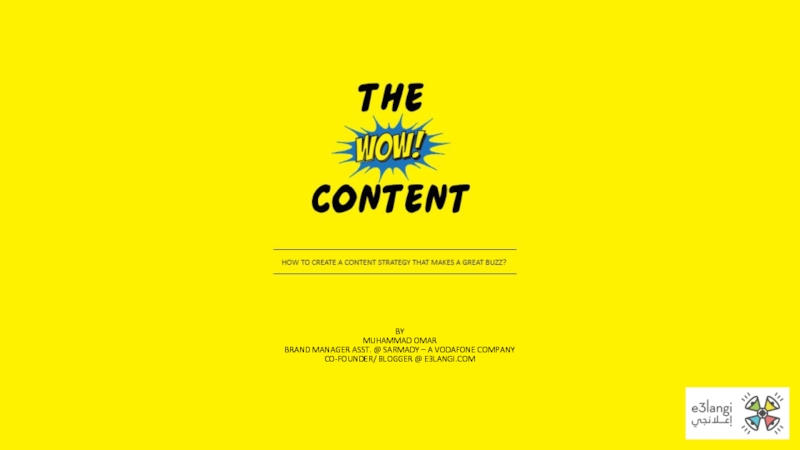
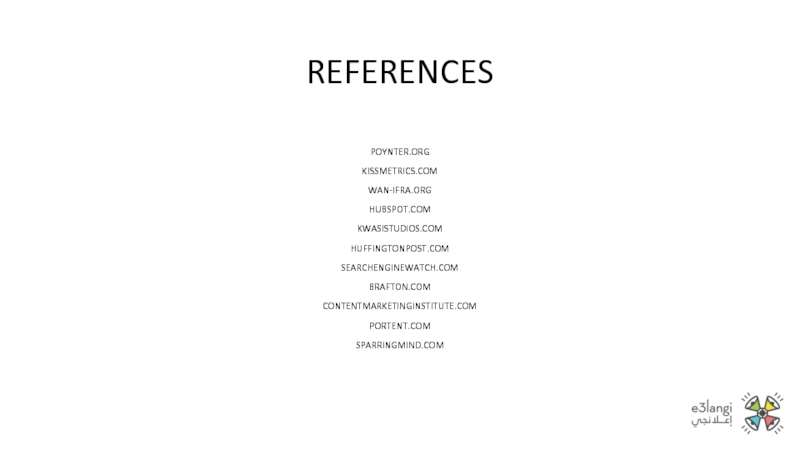
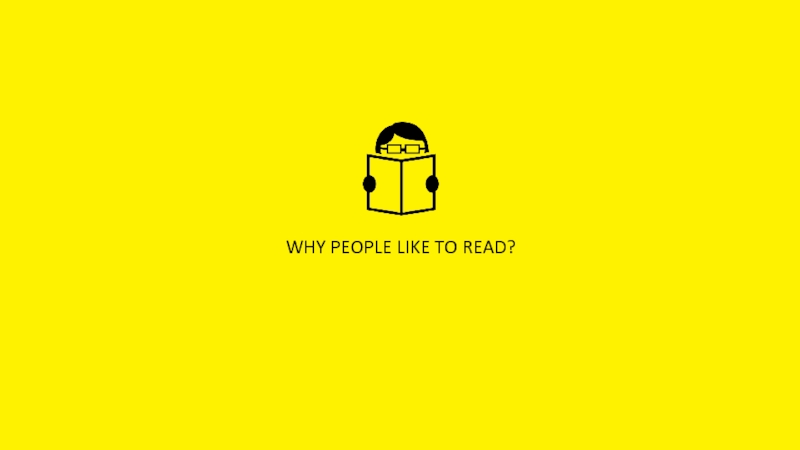
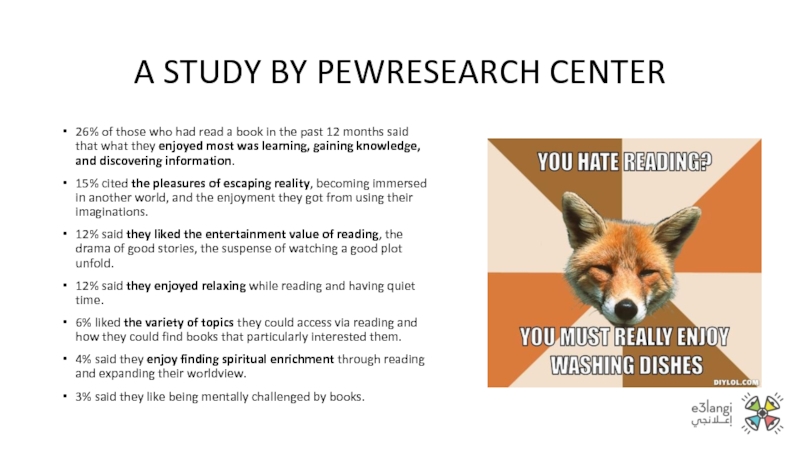

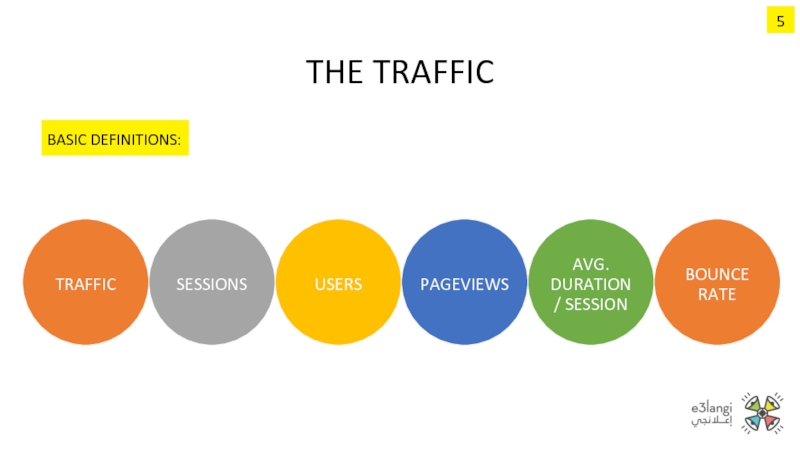
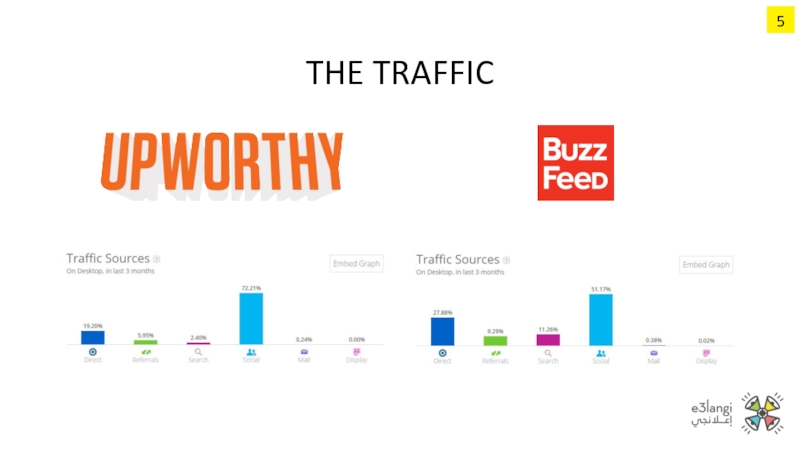
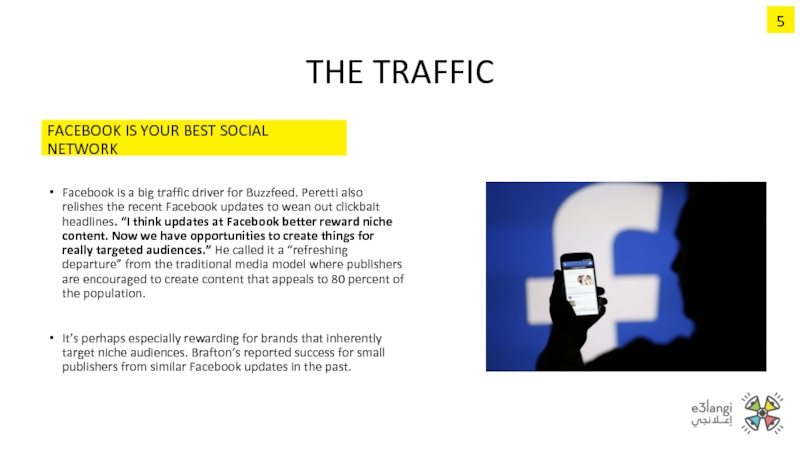
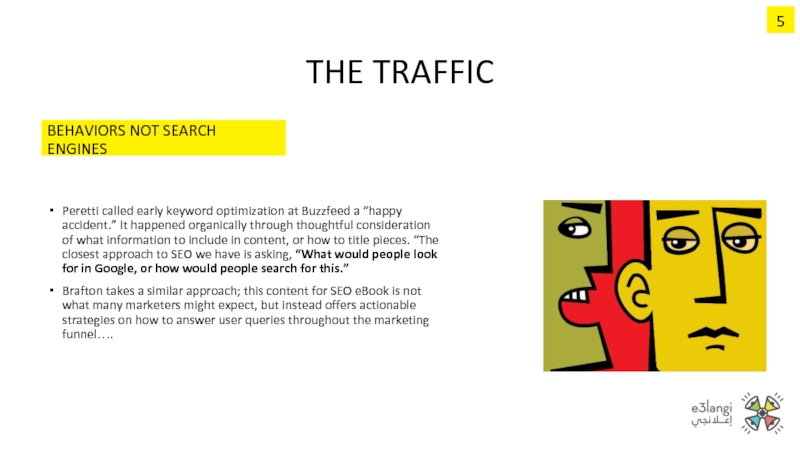
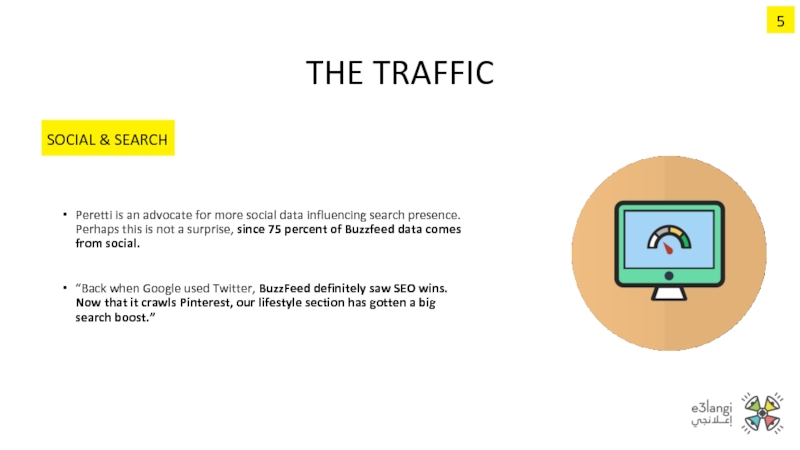
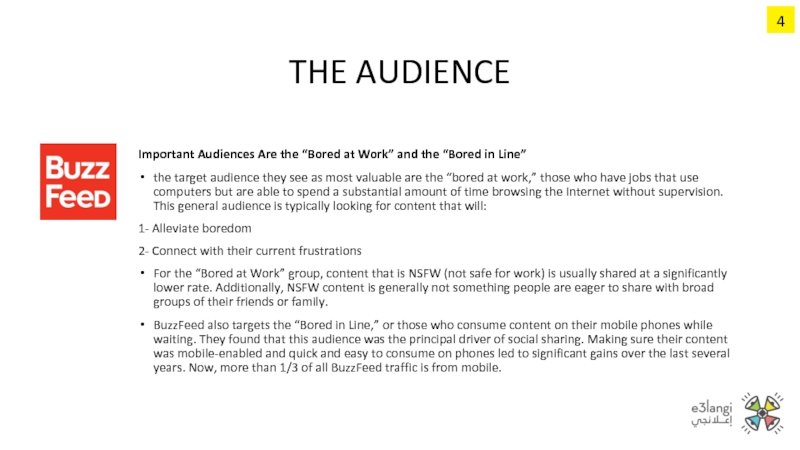
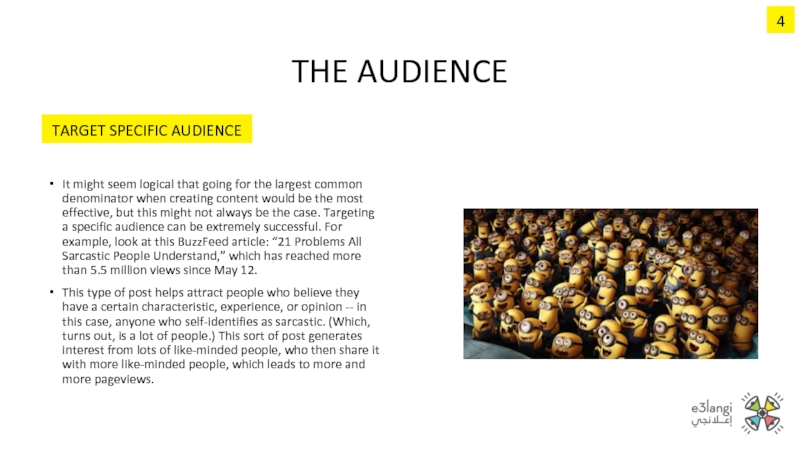
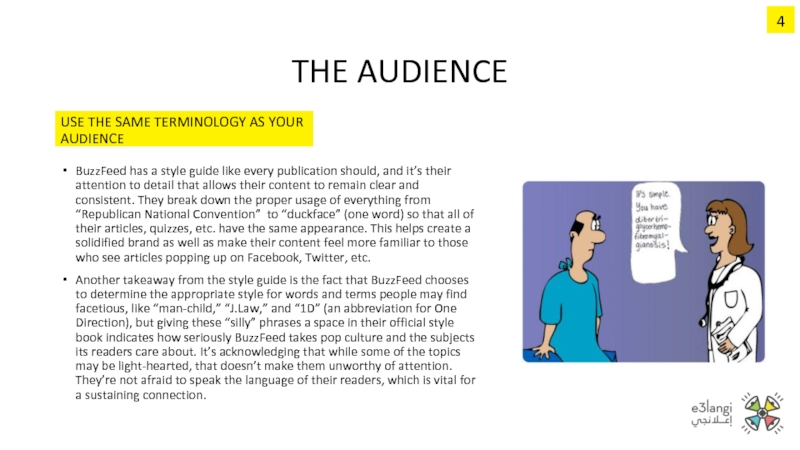
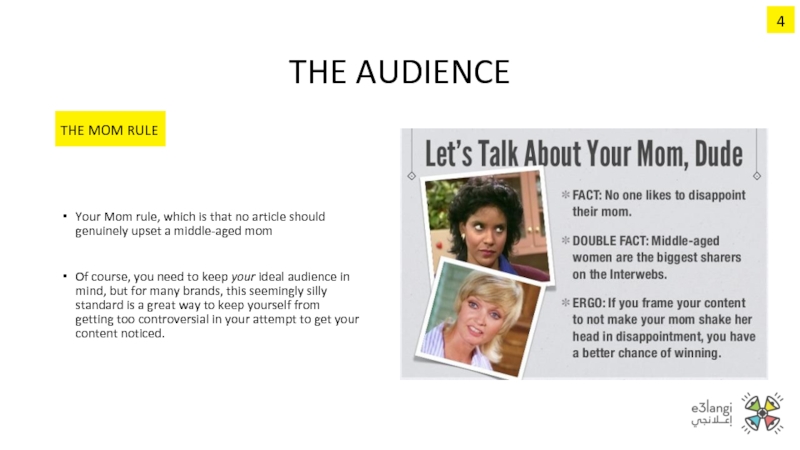
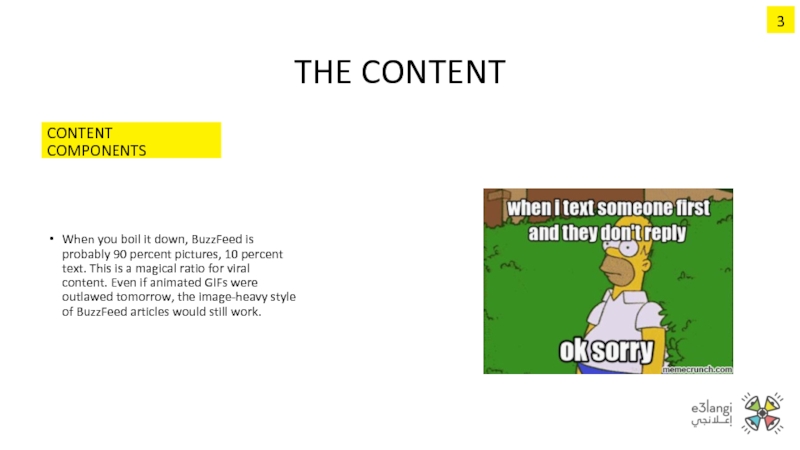
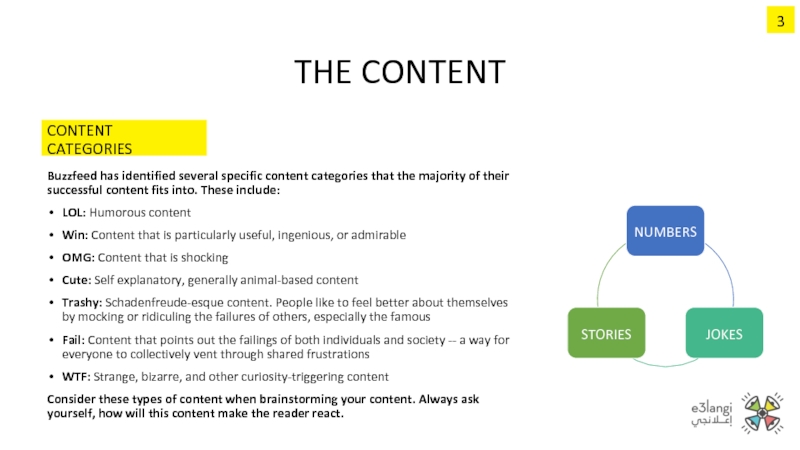
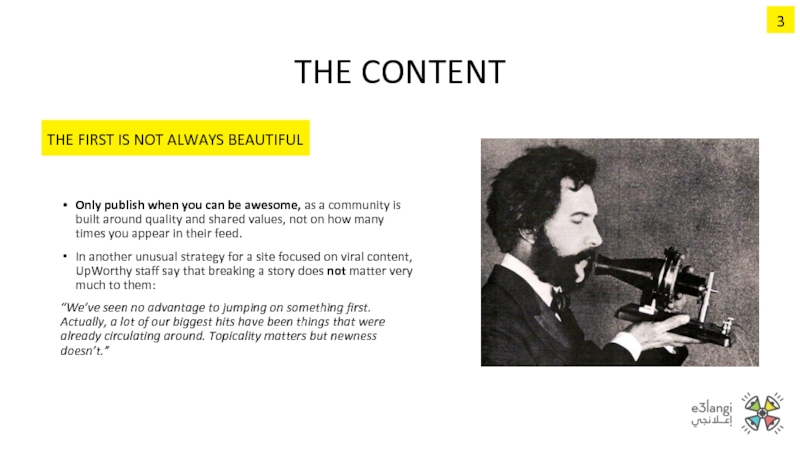
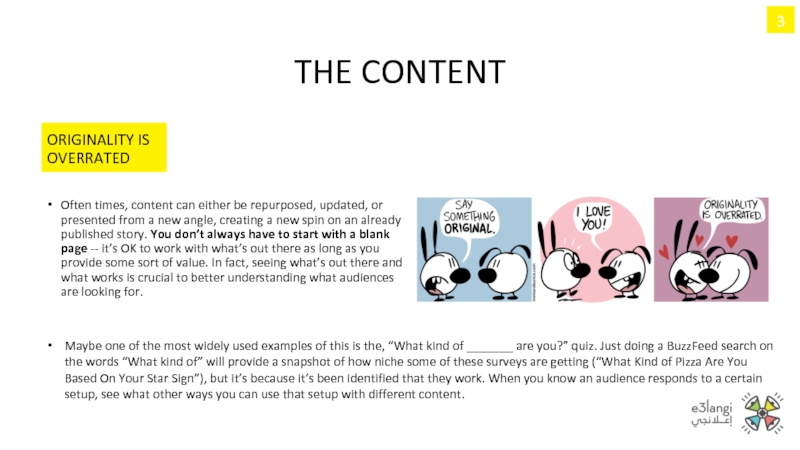
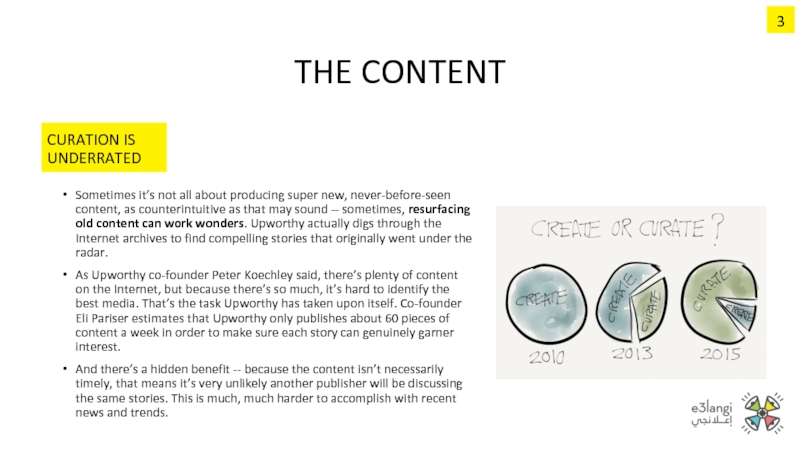
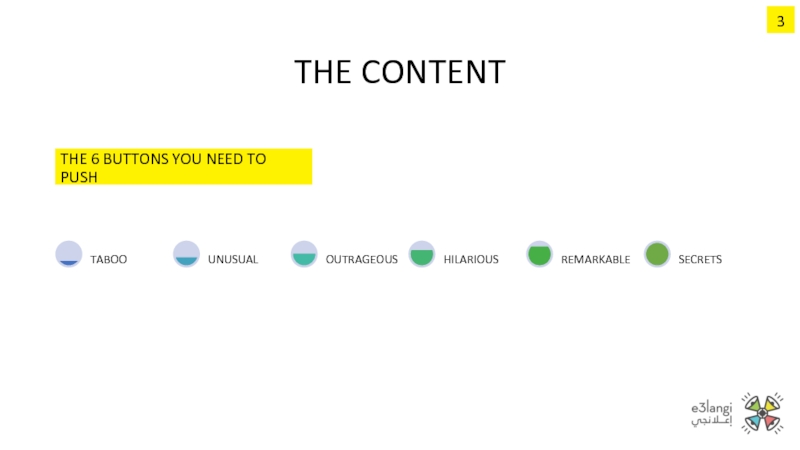
![[1] Taboo Content Definition: Labeled by a society as improper, unacceptable, prohibited, or profane.If you’re struggling](/img/tmb/3/231689/186722c66585c3818d6accba3345f260-800x.jpg)
![[2] Unusual Content Definition: Not usual, common, or ordinary; uncommon in amount or degree; exceptional.Unusual doesn’t](/img/tmb/3/231689/d6d01b9589c8653c5dffe02d620edae0-800x.jpg)
![[3] Outrageous Content Definition: Passing reasonable bounds, shocking, unconventional, extravagant.This is the kind of content that](/img/tmb/3/231689/cfe2ba67db3d09db3b3b1f1dfa8e60a5-800x.jpg)
![[4] Hilarious Content Definition: Arousing great merriment; funny.You have to watch with humor though, make sure](/img/tmb/3/231689/1045b9f72bbc0903860faa0c8612a05d-800x.jpg)
![[5] Remarkable Content Definition: Notable, extraordinary, worthy of notice or attention.Remarkable is generally a combination of](/img/tmb/3/231689/cfe916ab614e73e462a61a7cc9334982-800x.jpg)
![[6] Secret Content Definition: Kept from the knowledge of any but the initiated or privileged.I was](/img/tmb/3/231689/4d853fefb05076b0f2e591e732e6e013-800x.jpg)
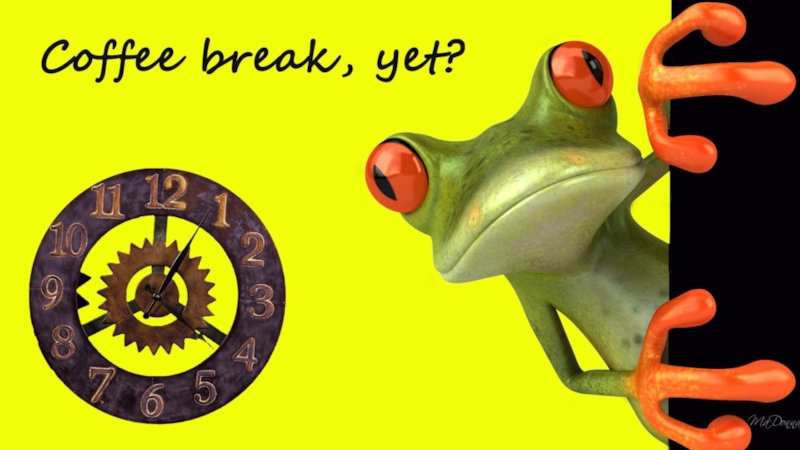
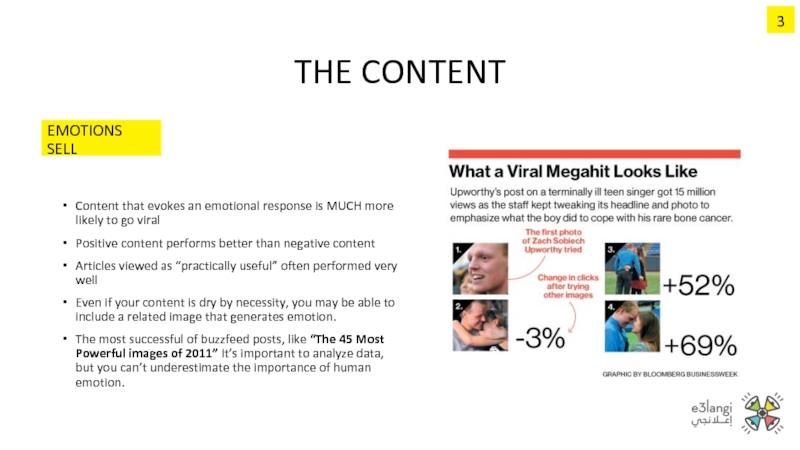
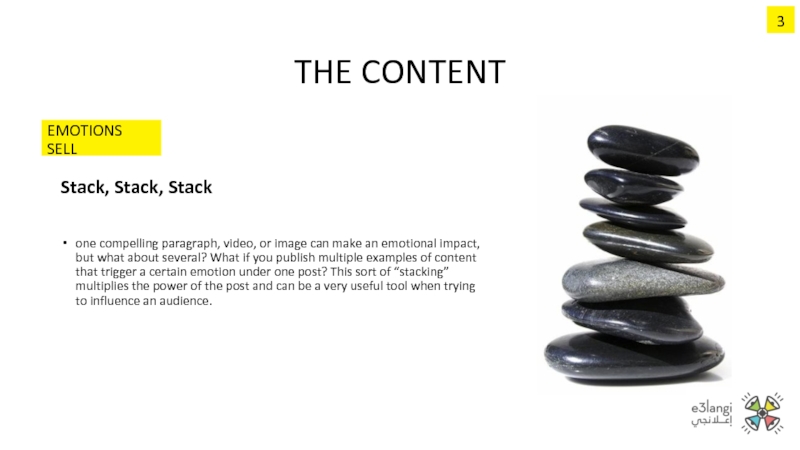
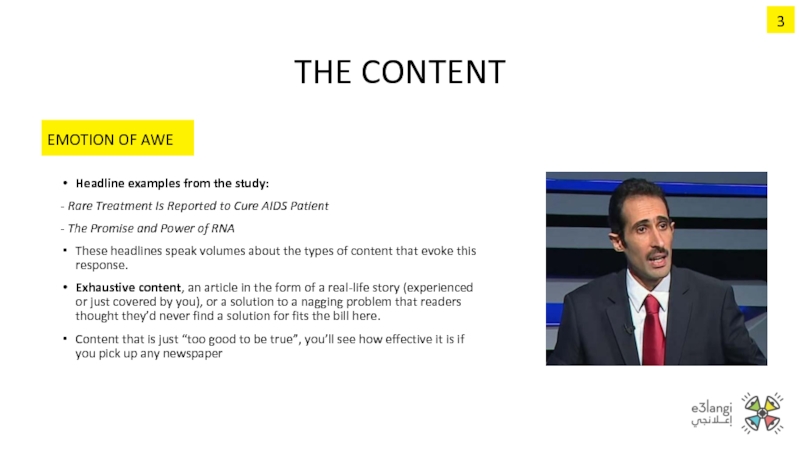
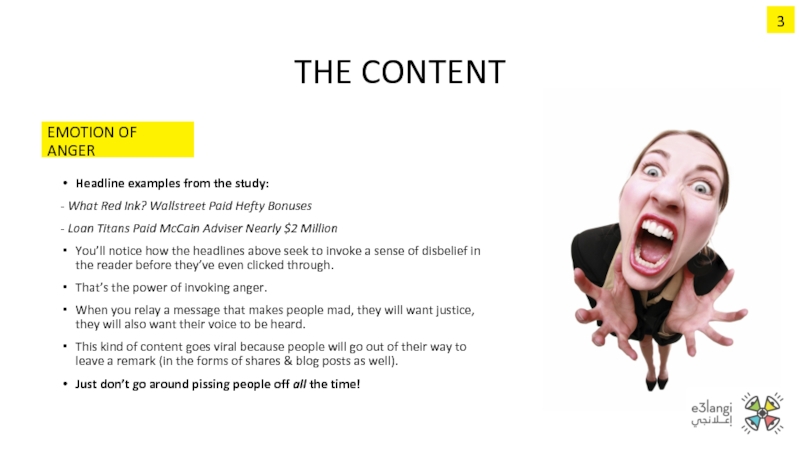
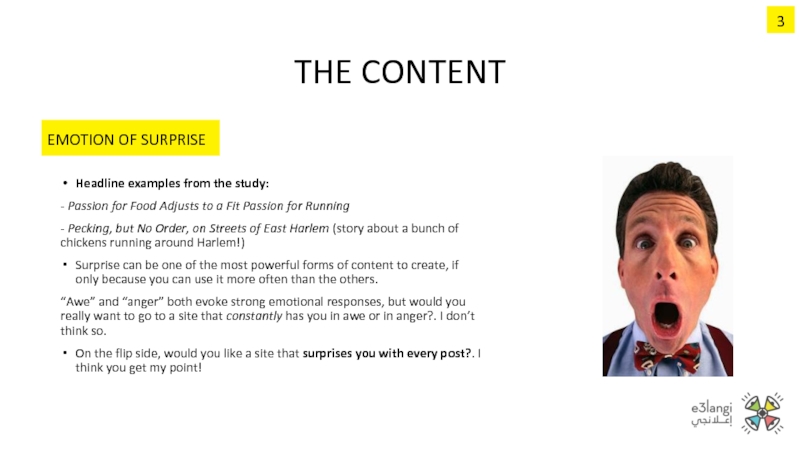
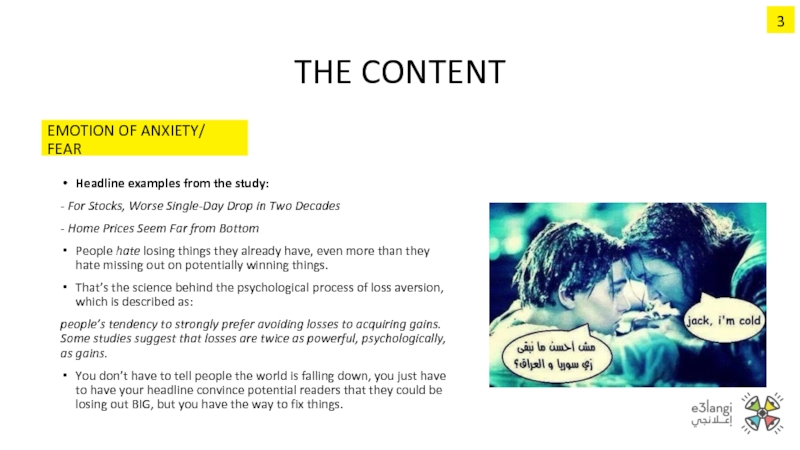
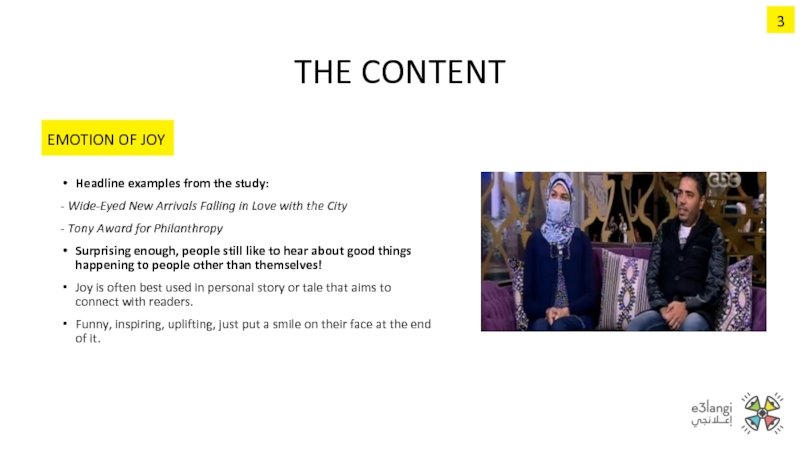
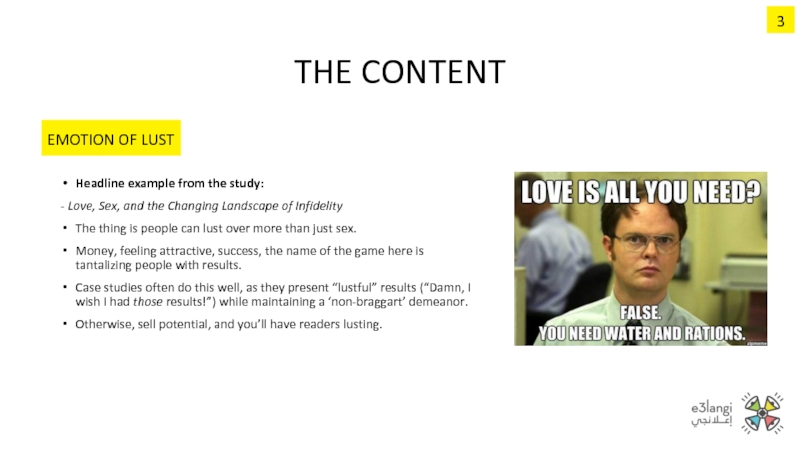
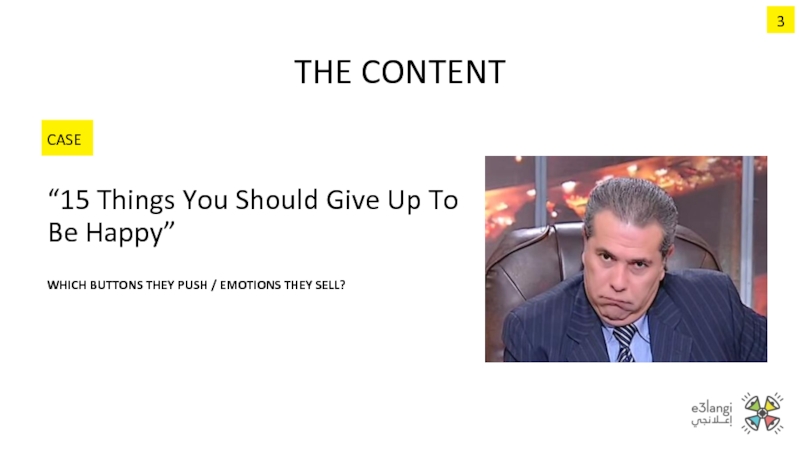
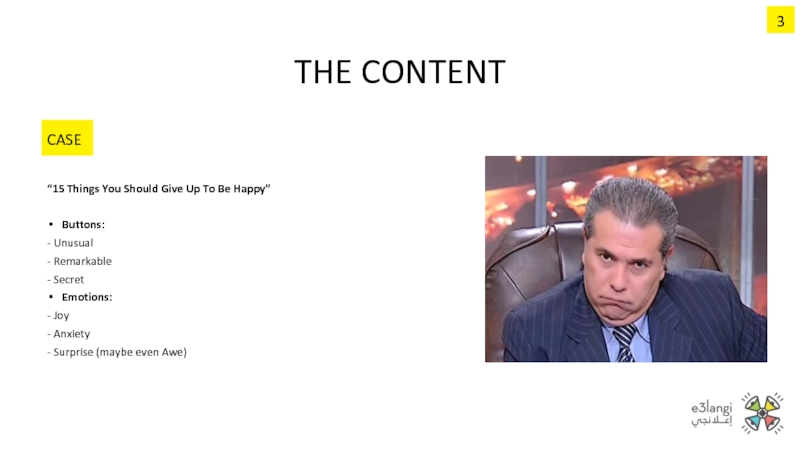
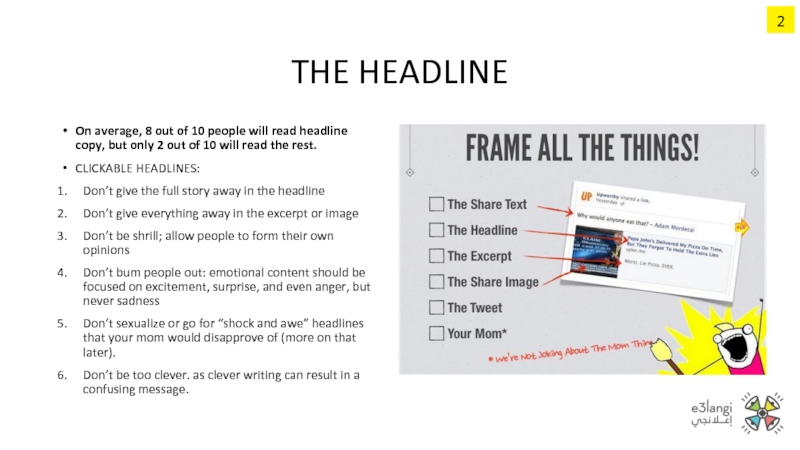
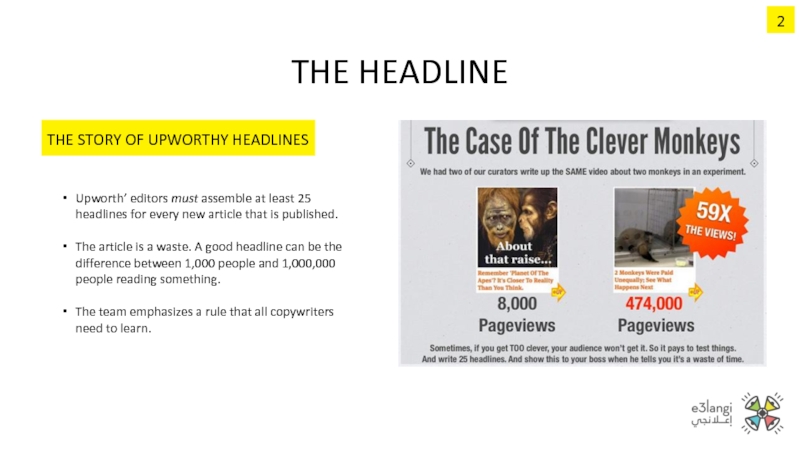
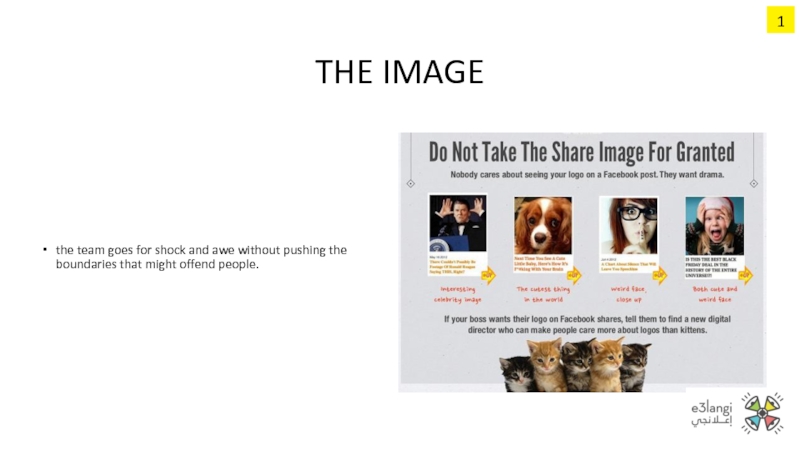
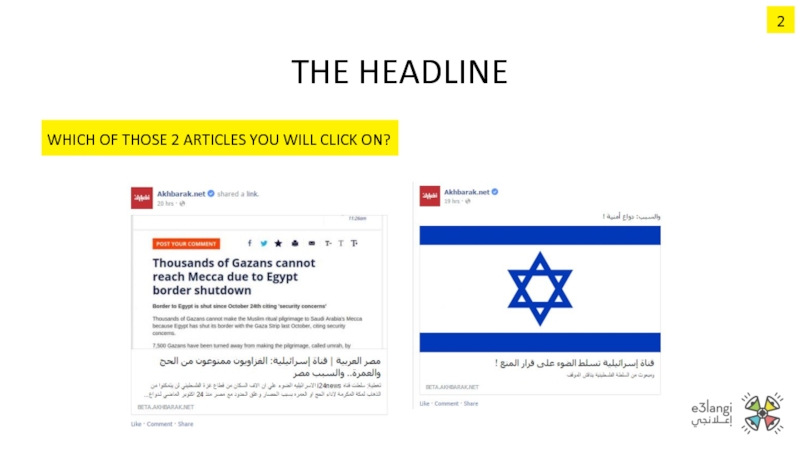
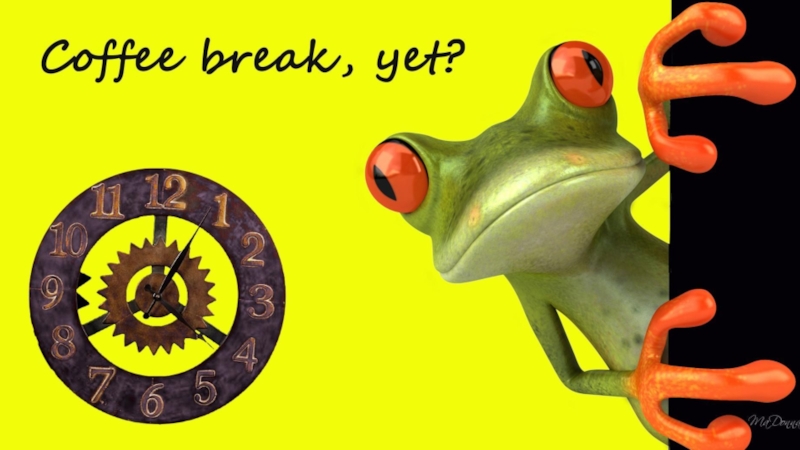
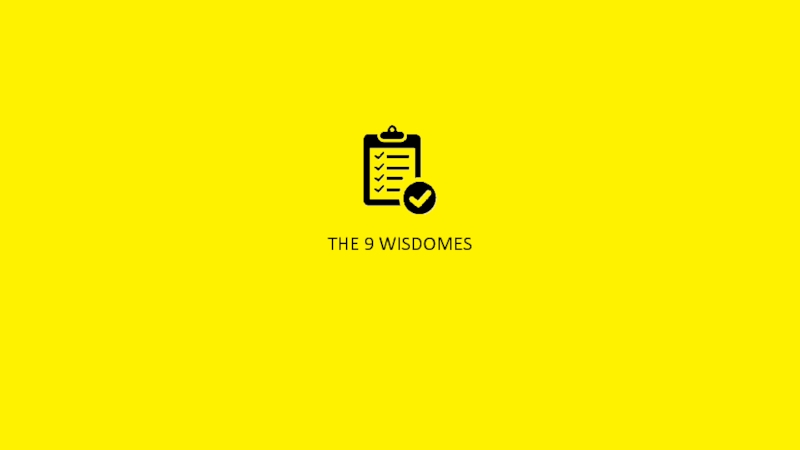
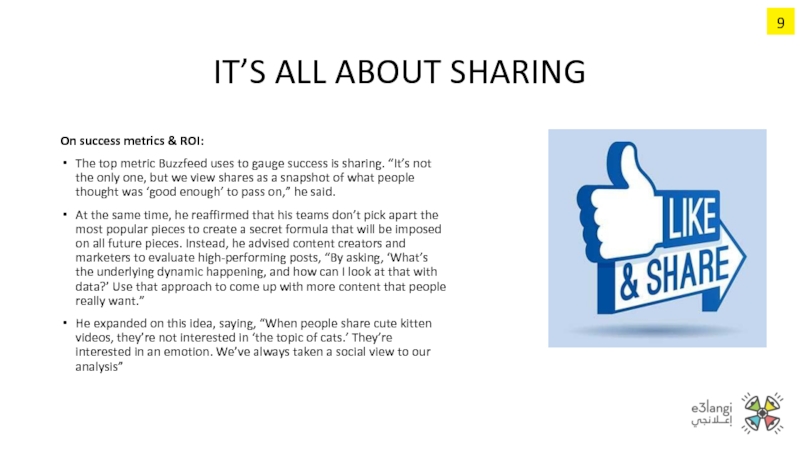
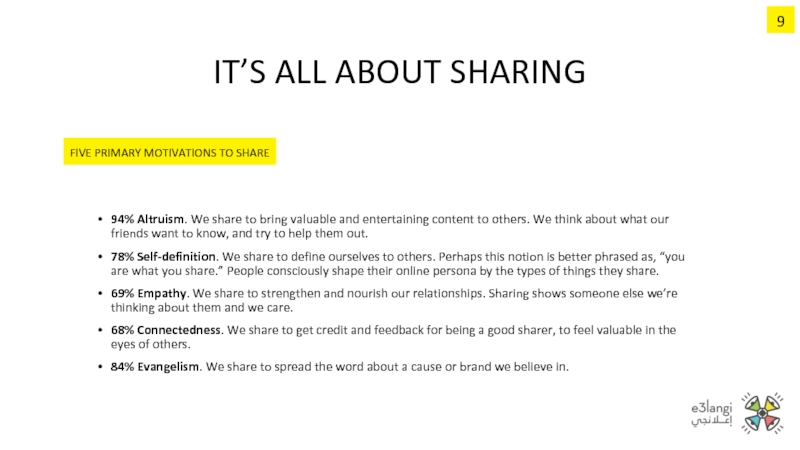
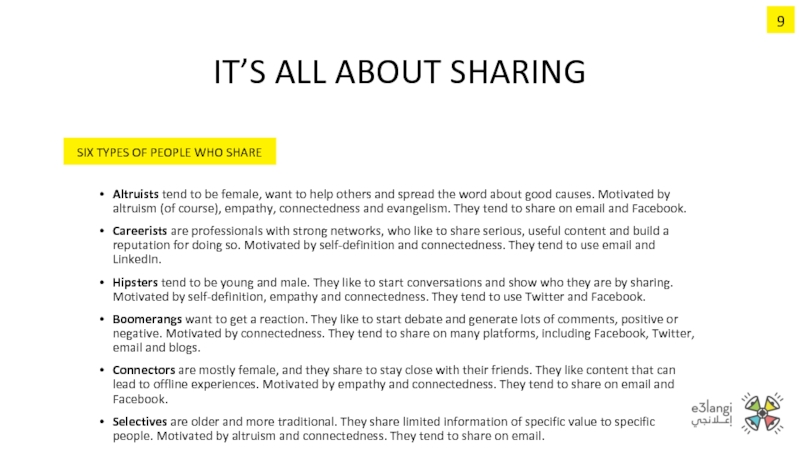
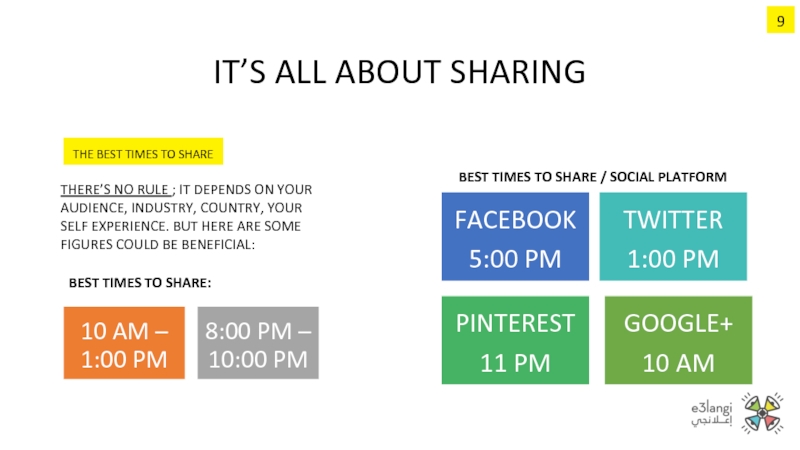
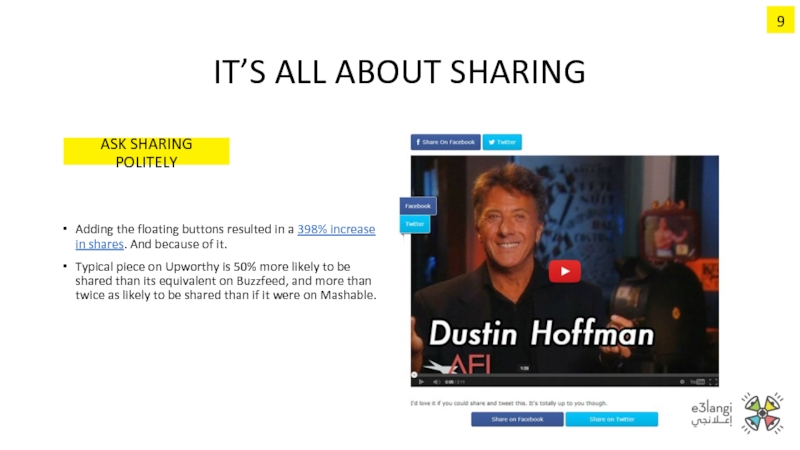
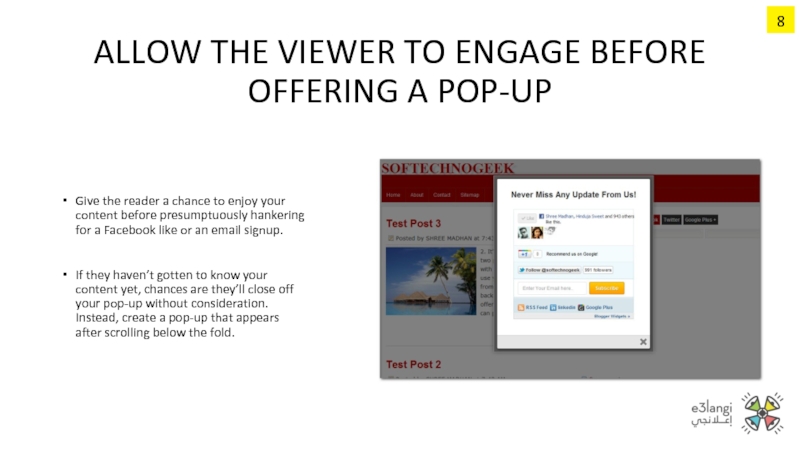
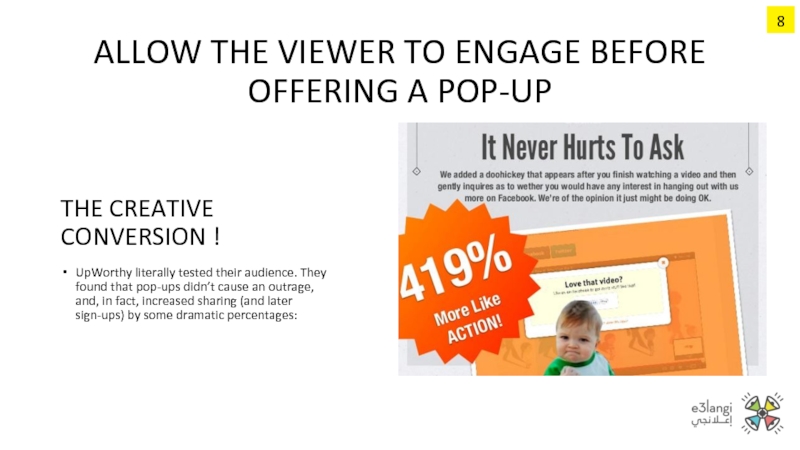
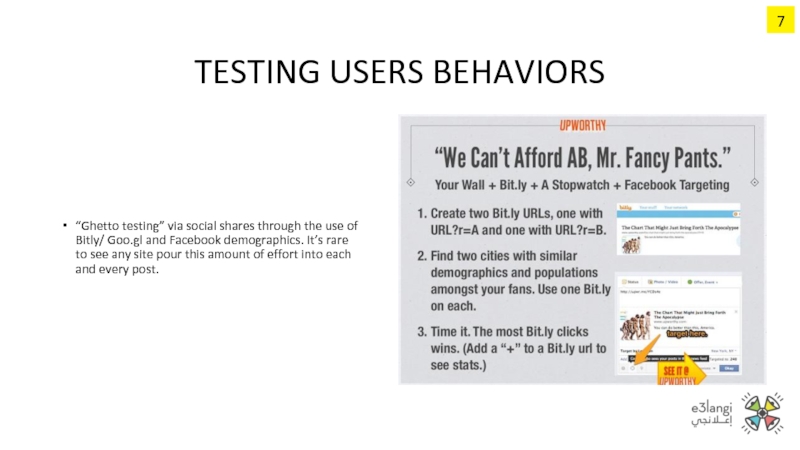
![READERS NOT PAGEVIEWSWe want [readers] to view the content, share it, subscribe to it, and](/img/tmb/3/231689/4ca62a2cf8581304a6d5b0327fbbd771-800x.jpg)
